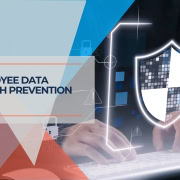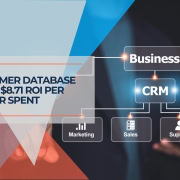8 Strategic Ways to Make Technology Work Better For Your Business
Published: August 16, 2022 | Last updated: September 2025
Key Takeaway: Modern businesses that strategically align technology with their operations see measurable improvements in efficiency, cost reduction, and competitive advantage. Success requires moving beyond basic tool adoption to create integrated systems that support long-term growth and adapt to changing market conditions.
Technology has evolved from a nice-to-have business enhancement to an essential foundation for competitive operations. Companies that approach technology strategically—rather than reactively—consistently outperform those that treat it as an afterthought. The difference lies not in having the latest tools, but in implementing systems that work together to solve real business challenges.
This comprehensive approach to business technology focuses on creating sustainable, scalable solutions that grow with your organization. Whether you're a small business looking to streamline operations or an established company seeking to modernize legacy systems, these strategies provide a roadmap for making technology a genuine competitive advantage rather than just another expense.
Building effective business technology requires understanding how different systems interconnect and support your core objectives. The most successful implementations start with clear goals, prioritize user adoption, and include robust security frameworks from the beginning.
Table of Contents
- 1 1. Implement Strategic Process Automation
- 2 2. Deploy Comprehensive Customer Relationship Management
- 3 3. Optimize Project and Task Management Systems
- 4 4. Modernize Financial Management and Accounting
- 5 5. Eliminate Paper-Based Processes Through Digital Transformation
- 6 6. Implement Comprehensive IT Infrastructure Monitoring
- 7 7. Establish Robust Cybersecurity Frameworks
- 8 8. Optimize Communication and Collaboration Platforms
- 9 Strategic Implementation Framework
- 10 Frequently Asked Questions
- 10.0.1 How long does it typically take to see ROI from business technology investments?
- 10.0.2 What's the most common mistake businesses make when implementing new technology?
- 10.0.3 How do I prioritize which technology improvements to implement first?
- 10.0.4 Should small businesses use the same technology strategies as larger companies?
- 10.0.5 How do I ensure technology investments remain relevant as business needs change?
- 10.0.6 What role should employees play in technology selection and implementation?
1. Implement Strategic Process Automation
Process automation has matured far beyond simple task scheduling to become a sophisticated approach to business optimization. Modern automation platforms can handle complex workflows, make intelligent decisions based on data patterns, and integrate seamlessly across multiple business systems.
High-Impact Automation Opportunities
Customer Onboarding: Automated welcome sequences, document collection, and account setup reduce manual processing time by up to 80% while improving consistency.
Invoice Processing: Intelligent document recognition and approval routing eliminate bottlenecks and reduce processing errors.
Inventory Management: Automated reorder points, supplier notifications, and demand forecasting prevent stockouts while optimizing carrying costs.
Employee Scheduling: Smart scheduling systems consider availability, skills, labor costs, and compliance requirements automatically.
The key to successful automation lies in starting with well-documented, repeatable processes. Attempting to automate poorly defined workflows often creates more problems than it solves. Begin by mapping current processes, identifying decision points, and understanding exception handling requirements.
Modern automation platforms offer sophisticated integration capabilities that connect disparate business systems. For example, a customer service inquiry can automatically trigger inventory checks, update CRM records, generate follow-up tasks, and provide real-time status updates without human intervention.
Implementation Considerations
Start with pilot programs in non-critical areas to test automation logic and user acceptance. Maintain manual override capabilities for exception handling, and ensure staff understand both automated processes and manual backup procedures.
2. Deploy Comprehensive Customer Relationship Management
Customer Relationship Management (CRM) systems have evolved into comprehensive business intelligence platforms that provide insights into customer behavior, sales performance, and market trends. Modern CRM implementations go far beyond contact management to become central hubs for customer-facing operations.
Effective CRM deployment requires understanding your specific customer journey and sales processes. A manufacturing company's CRM needs differ significantly from a professional services firm or retail operation. The most successful implementations customize workflows to match existing business processes while gradually introducing efficiency improvements.
Essential CRM Capabilities
Lead Scoring and Qualification: Automated lead scoring based on engagement patterns, demographic data, and behavioral indicators helps sales teams prioritize efforts effectively.
Pipeline Management
Visual pipeline tracking with automated stage progression, probability calculations, and forecasting accuracy provides clear visibility into sales performance and revenue projections.
Customer Communication History
Centralized communication logs across email, phone, chat, and social media ensure consistent customer experiences regardless of which team member handles interactions.
Integration capabilities determine CRM effectiveness more than feature lists. Your CRM should connect seamlessly with accounting software, marketing platforms, customer support systems, and e-commerce platforms. This integration eliminates data silos and provides a complete view of customer relationships.
Advanced CRM analytics provide actionable insights into customer behavior patterns, sales cycle optimization opportunities, and market segment performance. These insights enable data-driven decision-making rather than relying on intuition or limited sample sizes.
3. Optimize Project and Task Management Systems
Project management has evolved from simple task tracking to comprehensive resource optimization and strategic planning platforms. Modern project management systems provide real-time visibility into resource allocation, project profitability, and capacity planning while supporting diverse work styles and methodologies.
Successful project management implementation requires matching tools to team workflows rather than forcing teams to adapt to rigid software requirements. Agile teams need capabilities different from traditional waterfall projects, and creative teams have different collaboration needs than engineering teams.
Advanced Project Management Features
Resource Leveling: Intelligent resource allocation prevents team burnout while optimizing project timelines and budget utilization.
Dependency Management: Automated critical path analysis and dependency tracking help identify potential bottlenecks before they impact project delivery.
Time Tracking Integration: Seamless time capture with project billing, payroll processing, and profitability analysis streamlines administrative overhead.
Client Collaboration Portals: Secure client access to project status, deliverables, and communication history improves transparency and reduces the frequency of status meetings.
Effective task management extends beyond individual productivity to encompass team coordination and organizational alignment. Modern platforms provide portfolio-level visibility that helps leadership make informed decisions about resource allocation and strategic priorities.
Integration with communication tools, file storage systems, and business applications creates seamless workflows that reduce context switching and information fragmentation. Team members can access everything they need within a unified interface rather than juggling multiple applications.
4. Modernize Financial Management and Accounting
Disclosure: iFeelTech participates in affiliate programs.
We may earn a commission when you purchase through our links at no
additional cost to you. Our recommendations are based on professional
experience and testing.
Financial management technology has transformed from basic bookkeeping to comprehensive business intelligence platforms that provide real-time insights into cash flow, profitability, and economic performance. Modern accounting systems integrate with banking, payment processing, inventory management, and payroll systems to create unified financial ecosystems.
Cloud-based accounting platforms like QuickBooks Online offer sophisticated features, including automated bank reconciliation, intelligent expense categorization, and multi-currency support. These platforms eliminate manual data entry while providing audit trails and compliance reporting.
Essential Financial Management Capabilities
Automated Invoicing and Collections: Recurring billing, payment reminders, and integrated payment processing reduce accounts receivable cycles and improve cash flow predictability.
Real-Time Financial Reporting
Customizable dashboards and automated financial statements provide immediate visibility into business performance without waiting for month-end closing processes.
Tax Compliance Automation
Integrated tax calculation, reporting, and filing capabilities ensure compliance while minimizing administrative burden and reducing error risks.
Advanced financial analytics enable predictive planning and scenario modeling. Modern platforms can forecast cash flow based on historical patterns, identify seasonal trends, and model the financial impact of business decisions before implementation.
Integration with CRM systems provides customer profitability analysis, while project management integration enables accurate job costing and resource profitability assessment. This comprehensive view helps optimize pricing strategies and resource allocation decisions.
5. Eliminate Paper-Based Processes Through Digital Transformation
Digital transformation extends far beyond simple document scanning to encompass comprehensive workflow redesign and intelligent document processing. Modern document management systems use artificial intelligence to extract data, route approvals, and integrate with business applications automatically.
Successful digital transformation requires understanding document lifecycles and approval workflows rather than simply digitizing existing paper processes. The goal is to eliminate inefficiencies while maintaining necessary controls and audit trails.
Strategic Document Management Areas
Contract Management: Automated contract creation, approval routing, renewal notifications, and compliance tracking eliminate manual oversight while ensuring obligations are met.
Employee Onboarding: Digital forms, e-signature collection, and automated provisioning workflows reduce new hire processing time while improving compliance documentation.
Vendor Management: Digital vendor portals, automated invoice processing, and integrated payment systems streamline procurement while maintaining spending controls.
Regulatory Compliance: Automated compliance documentation, audit trail generation, and retention policy enforcement reduce compliance risks while minimizing administrative overhead.
Cloud-based document storage provides secure access from any location while maintaining version control and collaboration capabilities. Advanced platforms offer granular permission controls, activity monitoring, and integration with business applications for seamless workflow automation.
Modern document management includes intelligent search capabilities that can locate information within document contents, not just file names. This capability dramatically reduces time spent searching for information while ensuring important documents are never lost or overlooked.
6. Implement Comprehensive IT Infrastructure Monitoring
IT infrastructure monitoring has evolved from reactive problem-solving to proactive performance optimization and security threat detection. Modern monitoring platforms use artificial intelligence to identify patterns, predict failures, and automatically resolve common issues before they impact business operations.
Comprehensive monitoring encompasses network performance, server health, application availability, security threats, and user experience metrics. This holistic approach provides early warning of potential issues while optimizing system performance and resource utilization.
Understanding how customer databases and business systems interconnect helps identify critical monitoring points and establish appropriate alert thresholds.
Critical Monitoring Components
Network Performance Monitoring: Real-time bandwidth utilization, latency measurement, and connectivity monitoring ensure optimal network performance and identify capacity planning needs.
Security Event Monitoring
Automated threat detection, unusual activity identification, and incident response coordination help prevent security breaches while maintaining compliance requirements.
Application Performance Monitoring
End-user experience measurement, transaction monitoring, and performance bottleneck identification ensure business applications meet performance expectations.
Predictive analytics capabilities enable proactive maintenance scheduling and capacity planning. Modern platforms can identify trends that indicate impending hardware failures, software performance degradation, or security vulnerabilities before they impact operations.
Integration with help desk systems enables automated ticket creation and escalation procedures when monitoring thresholds are exceeded. This integration ensures appropriate response times while maintaining detailed incident documentation for trend analysis and process improvement.
7. Establish Robust Cybersecurity Frameworks
Cybersecurity has evolved from perimeter defense to comprehensive risk management that encompasses endpoint protection, network security, data governance, and user behavior monitoring. Modern security frameworks assume breach scenarios and focus on limiting damage while maintaining business continuity.
Effective cybersecurity requires layered defense strategies that address multiple attack vectors simultaneously. No single security tool provides complete protection, but integrated security platforms can coordinate responses and share threat intelligence across different security components.
Essential Security Components
Identity and Access Management: Multi-factor authentication, role-based access controls, and privileged account monitoring ensure only authorized users can access sensitive systems and data.
Endpoint Detection and Response: Advanced threat detection on workstations, servers, and mobile devices provides real-time protection against malware, ransomware, and unauthorized access attempts.
Network Segmentation: Intelligent network isolation limits the spread of security incidents while maintaining necessary business connectivity and collaboration capabilities.
Data Loss Prevention: Automated data classification, access monitoring, and transfer controls prevent unauthorized data exfiltration while supporting legitimate business processes.
Security awareness training and phishing simulation programs address the human element of cybersecurity. Regular training updates help employees recognize evolving threats while simulated attacks provide practical experience in identifying suspicious activities.
Comprehensive wireless security strategies are particularly critical as remote work and mobile device usage continue expanding across all business sectors.
Incident response planning and regular testing ensure organizations can respond effectively to security incidents. Well-defined response procedures minimize damage while preserving evidence for forensic analysis and regulatory reporting requirements.
8. Optimize Communication and Collaboration Platforms
Modern communication platforms integrate voice, video, messaging, and file sharing into unified collaboration environments that support diverse work styles and geographic distribution. Effective collaboration technology eliminates communication silos while maintaining security and compliance requirements.
Successful collaboration platform deployment requires understanding team communication patterns and workflow requirements rather than simply providing generic tools. Different teams have varying needs for real-time communication, asynchronous collaboration, and external partner access.
Advanced Collaboration Features
Intelligent Meeting Scheduling: AI-powered scheduling assistants coordinate complex multi-participant meetings across time zones while optimizing room and resource allocation.
Persistent Team Workspaces
Project-based collaboration spaces maintain conversation history, file versions, and decision documentation throughout project lifecycles, enabling new team members to quickly understand context.
External Partner Integration
Secure guest access and partner portals enable collaboration with clients, vendors, and contractors while maintaining data security and access controls.
Integration with business applications enables contextual collaboration where team members can discuss specific documents, projects, or customer issues within relevant business contexts rather than switching between multiple applications.
Analytics capabilities provide insights into communication patterns, collaboration effectiveness, and technology adoption rates. These insights help optimize platform configurations and identify training opportunities for improved productivity.
Strategic Implementation Framework
Successful technology implementation requires systematic planning and phased deployment rather than attempting comprehensive changes simultaneously. The most effective approach prioritizes high-impact, low-risk improvements while building organizational capability for more complex transformations.
Phase 1: Foundation Building (Months 1-3)
Establish core infrastructure, security frameworks, and essential business applications. Focus on stability and basic functionality rather than advanced features.
Phase 2: Process Integration (Months 4-8)
Connect systems through integration platforms and begin automating routine processes. Emphasize user training and change management support.
Phase 3: Optimization and Analytics (Months 9-12)
Implement advanced analytics, optimize workflows based on usage data, and establish continuous improvement processes for ongoing technology evolution.
Change management and user adoption strategies determine implementation success more than technical capabilities. Comprehensive training programs, clear communication about benefits, and ongoing support resources help ensure technology investments deliver expected returns.
Regular assessment and optimization ensure technology continues meeting evolving business needs. Quarterly reviews of system performance, user satisfaction, and business impact provide opportunities for continuous improvement and strategic adjustments.
- Start with clearly defined business objectives rather than technology features
- Prioritize user adoption and change management throughout implementation
- Ensure robust security frameworks are integrated from the beginning
- Plan for system integration and data migration requirements
- Establish metrics for measuring technology investment returns
- Maintain flexibility for future technology evolution and business growth
Making technology work effectively for your business requires strategic thinking, systematic implementation, and ongoing optimization. The most successful organizations view technology as an enabler of business objectives rather than an end in itself. By focusing on integration, security, and user adoption, businesses can create technology environments that provide sustainable competitive advantages while supporting long-term growth and adaptation to changing market conditions. For comprehensive guidance on building resilient business technology frameworks, explore our complete business security resources and implementation strategies.
Frequently Asked Questions
How long does it typically take to see ROI from business technology investments?
ROI timelines vary significantly based on implementation scope and business size. Basic automation and cloud migration often show returns within 3-6 months through reduced labor costs and improved efficiency. Comprehensive digital transformation projects typically require 12-18 months to demonstrate full returns, but early wins in specific areas can provide immediate value. The key is implementing in phases with measurable milestones rather than waiting for complete system deployment.
What's the most common mistake businesses make when implementing new technology?
The most frequent mistake is focusing on technology features rather than business processes and user adoption. Many organizations purchase sophisticated software but fail to invest adequately in training, change management, and process optimization. This leads to underutilization, user resistance, and poor ROI. Successful implementations prioritize user needs, provide comprehensive training, and align technology capabilities with actual business workflows.
How do I prioritize which technology improvements to implement first?
Start by identifying your biggest operational pain points and inefficiencies rather than the most exciting technology options. Focus on areas where manual processes create bottlenecks, errors frequently occur, or significant time is wasted on routine tasks. Security improvements should always be a high priority regardless of other considerations. Quick wins that demonstrate clear value help build organizational support for larger technology initiatives.
Should small businesses use the same technology strategies as larger companies?
Small businesses should focus on cloud-based solutions that provide enterprise-level capabilities without requiring significant IT infrastructure investments. The core strategies remain the same—automation, integration, security, and user adoption—but implementation approaches differ. Small businesses can often move faster and be more agile, but they need solutions that scale with growth and don't require dedicated IT staff for ongoing management.
How do I ensure technology investments remain relevant as business needs change?
Choose platforms with strong integration capabilities, open APIs, and active development roadmaps rather than closed systems with limited flexibility. Implement regular technology reviews (quarterly or semi-annually) to assess performance against business objectives and identify optimization opportunities. Maintain relationships with technology vendors and stay informed about industry trends that might impact your business requirements.
What role should employees play in technology selection and implementation?
Employees should be heavily involved in technology selection since they'll be the primary users. Conduct user needs assessments, involve key stakeholders in vendor evaluations, and establish user feedback mechanisms throughout implementation. Create technology champions within each department who can provide peer support and identify optimization opportunities. Employee input during selection prevents adoption problems and ensures chosen solutions actually address real workflow challenges.











Leave a Reply
Want to join the discussion?Feel free to contribute!